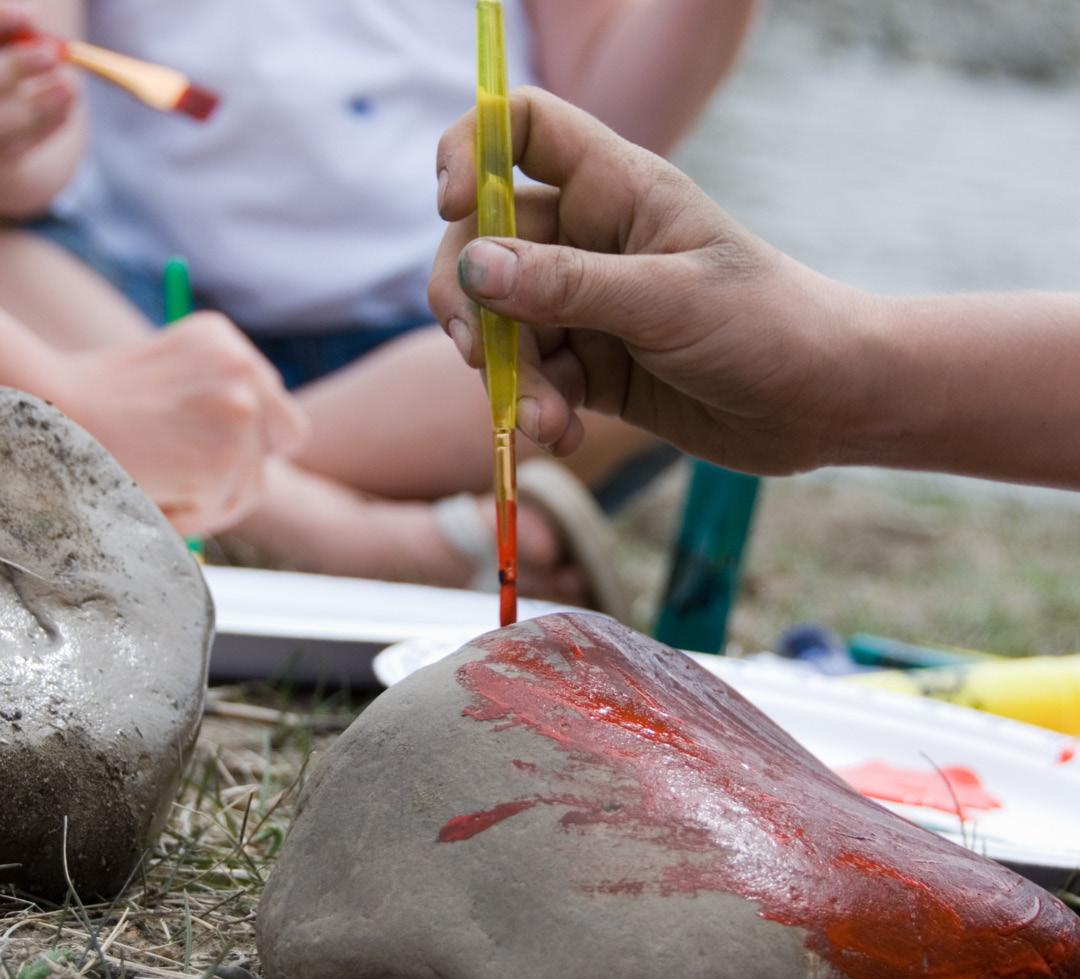CAMP AND PROGRAMS GUIDE

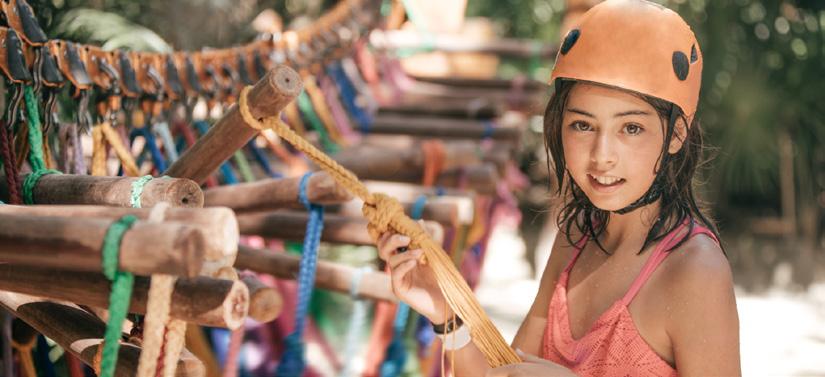















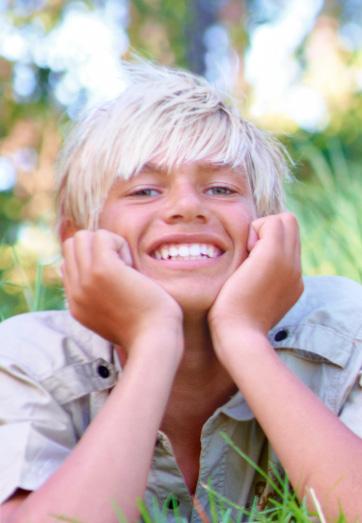
Minnesota has hundreds of summer camps to offer families. Unfortunately, not everyone can afford to send their kids to camp. However, there are many options available to help families to reduce costs and make camp a reality for their children.
Financial assistance is available at numerous Minnesota camps, you just have to apply. If you’re going to take this route, start your camp search early and apply for financial assistance early, to guarantee your child a spot. Also, many local churches have camp scholarships set aside for children who want to attend summer activities such as camp.
Many camps offer early bird registration discounts as well as discounts for families sending more than one child to the same camp. If you plan to stay at camp for an extended amount of time, you may be able to receive a discount.

Volunteering to help make the camp run smoothly during the time your child is at camp is another way to reduce costs. If your child is old enough to be on a camp work crew, you might be able to send him or her to camp for free in exchange for labor.
Having your camper take a camp bus may be an extra cost you can avoid. Asking other parents who are sending their child to the same camp if they would be interested in carpooling with your family can help you save money.
If you foresee sending your child to camp months ahead of registration, you can ask family members to gift funds towards camp for birthdays and holiday presents.
Instead of sending kids to camp for overnight stays, consider a day camp in your area. These camps are filled with a wide range of sports, crafts, games and more. Colleges and park and recreations programs through your city are known for running themed day camps throughout the summer, too. Day-camp costs may be eligible for a tax deduction.
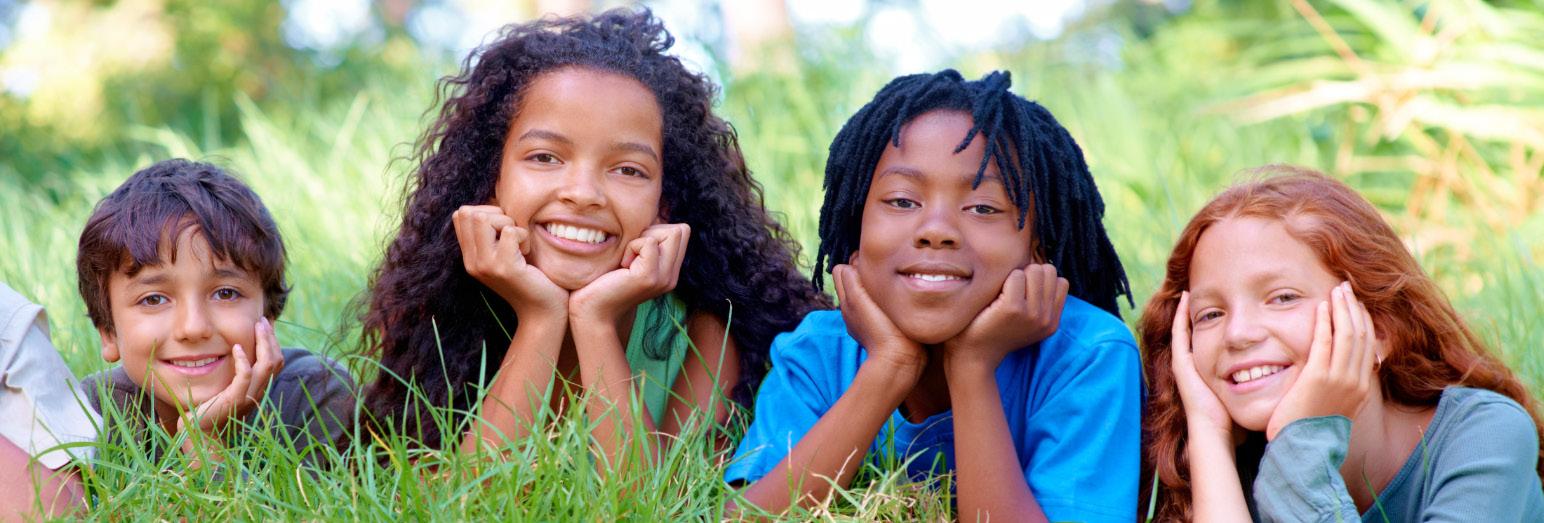

There are many nonprofit camps in Minnesota. Some request campers to contribute as much or as little as the family can afford. Here are some of the top affordable summer camp options in the state:
The YMCA raises money and works with outside organizations to sponsor kids who otherwise wouldn’t be able to attend camp because of financial reasons, according to the community program director at YMCA’s Camp St. Croix and DayCroix in Hudson, Wis. Over the past 8 years hundreds of campers attended Camp St. Croix on full scholarships made possible by grants, “We want every kid to be able to come to camp.”
The YMCA provides full and partial financial assistance to certain campers based on income as well as other special circumstances. Registration begins in January. Sign up as soon as possible. Also, offered are overnight camps which include a vast array of activities such as horseback riding, swimming, ropes, kayaking, canoeing, backpacking and rock climbing. Learn more by calling 612-230-9622 or going to ymcatwincities.org/camps.

This camp — located in Gilbert, about an hour north of Duluth — is based on familiar childhood storybooks and is a unique camp for all ages. Campers find themselves lodging in cabins unlike any other camp. There’s a barn cabin, a real caboose, a pumpkin cabin and, among others, a boot cabin in honor of There Was an Old Woman Who Lived In A Shoe. Adjacent to Cedar Island Lake, this camp is offered on a pay-as-you-can basis. See https://storybooklodge.org/.

Children of active and retired National Guard service members are invited to register for this camp in Little Falls, about two hours north of the Twin Cities. Nieces, nephews, siblings and grandchildren of volunteers may also attend. There are a variety of camps like this one for service children. Find more here. See mngyc.org for more information.
Located in Frazee — one hour east of Fargo — this camp offers campers scholarships and options to make camp available for families of all financial levels. Throughout the day, campers choose from a selection of small-group activities such as music, crafts, drama club, sports, games, horsemanship and swimming programs. They also participate in a large group to learn about God in an interdenominational setting. See camp-cherith.com.


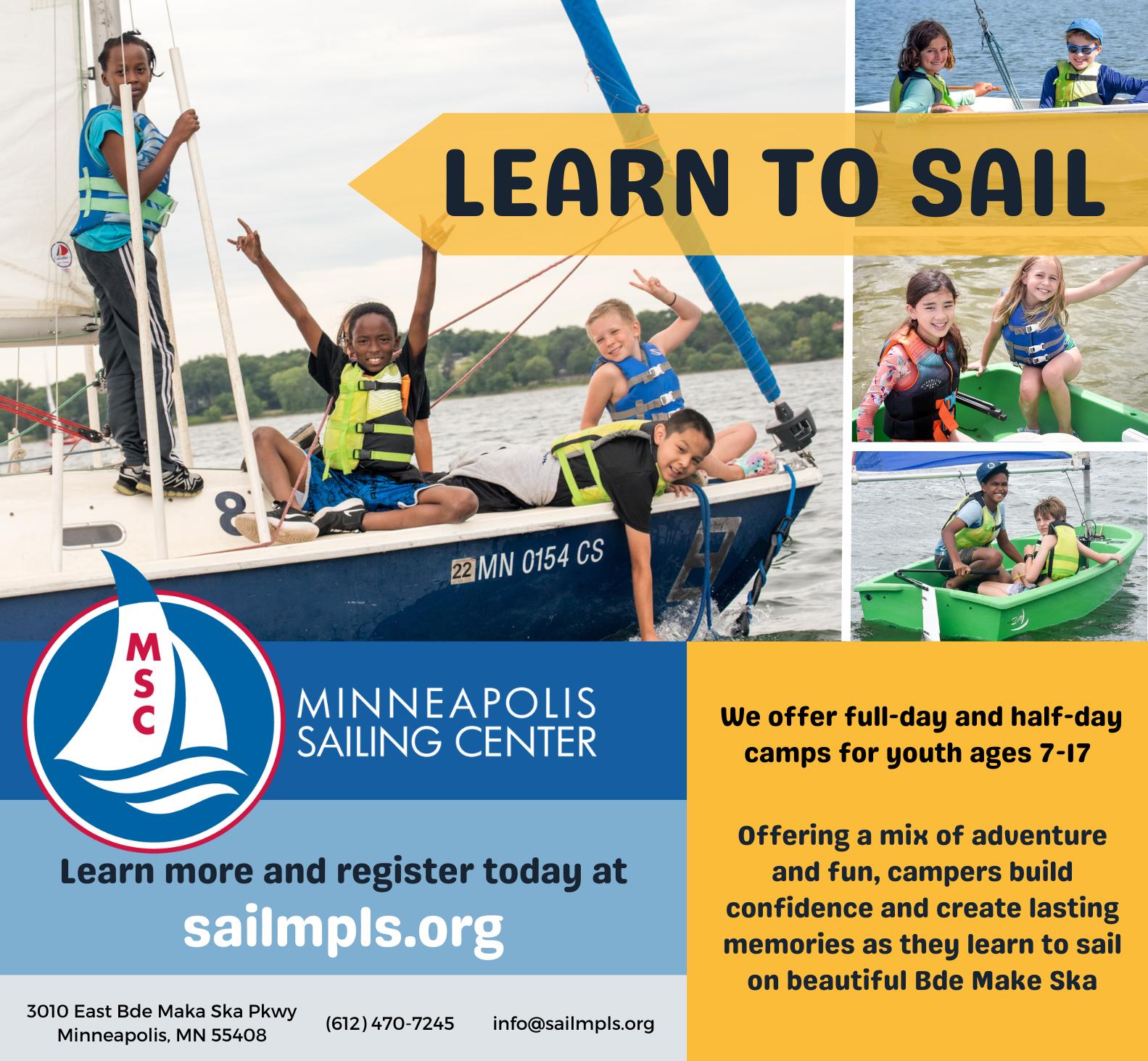

Summer camp can create experiences that last a lifetime. But the expense! Weekly fees for sleep-away camps in Minnesota cost $500 to $1000, on average. Day camps are less, but still run between $100 and $350 per week, according to the midwest office of the American Camp Association. For parents used to paying for childcare or private school, the cost may not be much different than that regular tuition check. But moms and dads with kids in public school may find themselves suffering from summer camp sticker shock.
First, plan ahead. Finish reading this article and then grab a calendar. Figure out how many weeks of camp will be needed and estimate the cost. Most camps put out information in the late winter. If not, last year’s prices are often available online, and most camps have a year-round contact person.
With a ballpark estimate of summer camp costs in hand, divide the price tag by the number of months until camp orientation and start saving immediately.

Say the price tag is out of reach. Most camps will work with families to make it affordable.
More than one million kids receive some form of financial assistance from American Camp Association-accredited camps each year, executive director of the American Camp Association’s Northland office says. If a scholarship isn’t available from the camp itself, it’s possible that a community organization or church might offer assistance.
Camps also typically give out discounts for early registration, multiple-week attendance, and for sending more than one child. And if camps are anything like hotels, you may get a deal by filling an empty spot at the last minute.
For working parents who rely on summer camp as childcare for their school-aged children, tax benefits can reduce the burden on family finances. Do you have a dependent care flexible spending account, which allows you to set aside as much as $5,000 pre-tax from your paycheck? If you’re sending your children ages 13 or younger to camp so you can work or look for work, then you can use your dependent care account for the cost.
The IRS also offers a tax credit for dependent care expenses. The actual amount depends on your income and whether you have a flexible spending account or other workplace childcare perks.
However, overnight camps are not usually eligible for either of these benefits. For the low-down, visit irs.gov and search for Publication 503.

Families who send their kids to academic or “enrichment”-oriented camps (think most anything besides sports camps), should research the Minnesota K–12 education credit, which offers a dollar for dollar tax break for some instruction-related expenses, up to a certain cap. The credit is only available for lower-income families. (Visit taxes.state.mn.us for the qualifications.)

There is also a Minnesota K–12 education subtraction, which takes into account qualifying different expenses for elementary-aged kids and for children in grades 7 to 12. How much is a subtraction worth? Minnesota’s current income tax rate information can be found here: https://www.revenue.state.mn.us/k-12 -education-subtraction-and-credit.

MAKE SURE TO CHECK IT OUT!

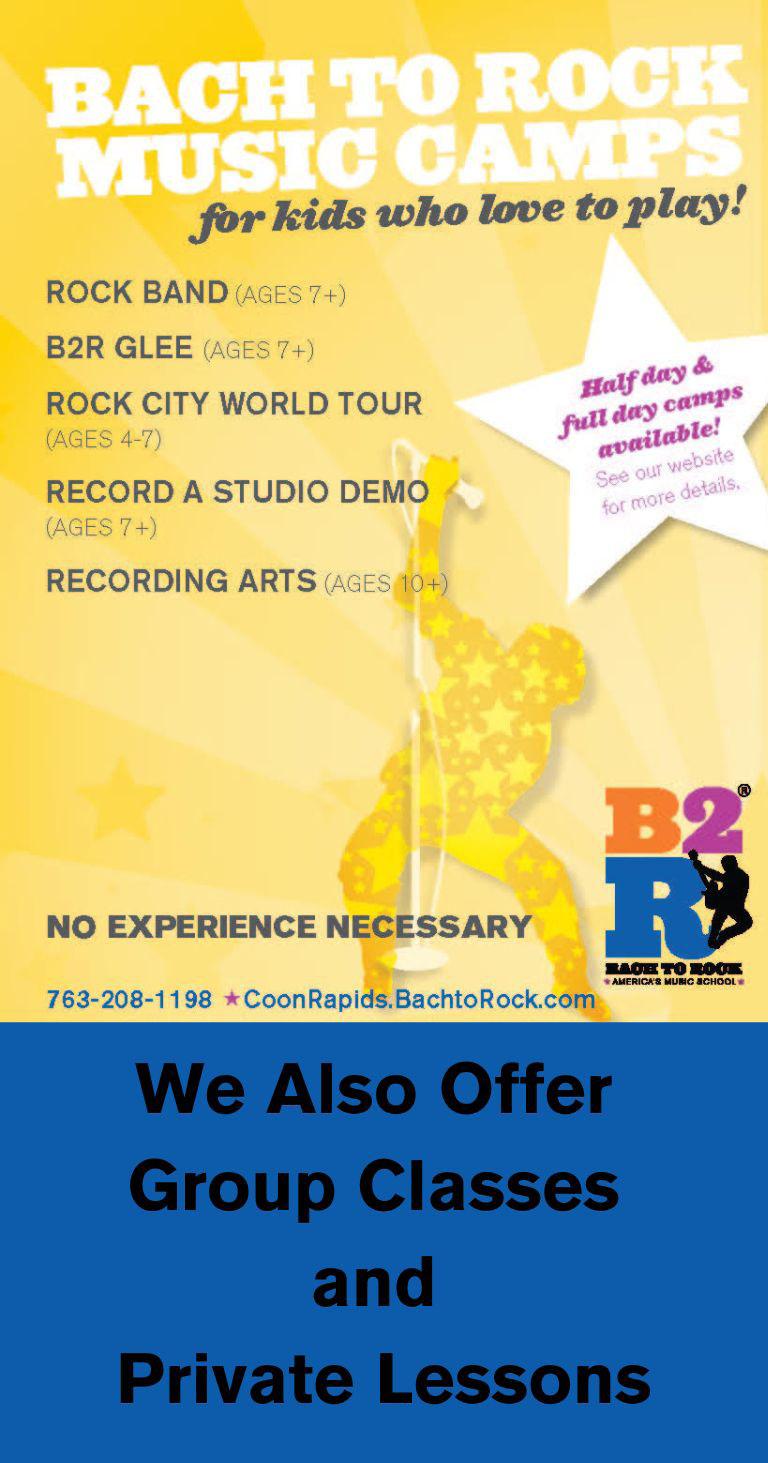


Now that many of the youngsters who laughed at that silly camp song have kids of their own and are looking for the perfect summer camp, a place where their children can make friends, learn some new skills, and gain a little independence. But how do you decide what type of camp is right for your child?
Our friends at the Minnesota Section of the American Camping Association say the first step is to know your expectations. Do you expect the camp to provide swimming lessons? Does your child have special dietary needs? Do you want an emphasis on a specific sport or academic area? Are you looking for a camp that provides a great deal of structured group activity or a camp that emphasizes individual development?
Most experts suggest that a child’s first camping experience be at a camp with a general program that balances sports, crafts, and other activities. They also say that, ideally, a camp should be a place that will reinforce the values that have been taught at home. For instance, a child from a home with strict standards for behavior and a formal routine might not do well at a very informal, nonrestrictive camp.
A first-time camper may be more comfortable at a camp relativity close to home. “It’s a scary thing, especially the first time, going away from home,” said the Minnesota American Camp Association. In subsequent years, camp selection might be dictated in part by where the child’s friends from that first season at camp will be going, MN ACA said.
The type of skills a child will acquire at camp varies with the child’s age and the kind of camp, according to MN ACA. Youngsters who spend a whole day away from home for the first time by attending day camp will get their first taste of independence. Older children might gain self-esteem by interacting with other campers, facing challenges such as the rigors of backpacking or a canoe trip, and learning to do things for themselves. Teenage campers, MN ACA said, are likely to hon leadership skills by working with their peers and younger campers.
“The camp experience gives children a chance to improve their self-esteem, gives them a sense of independence all provided by a supportive community,” MN ACA staff said.
Taking the time now to consider your child’s age, personality, and interests, as well as your own expectations, can help make this summer’s camp experience one that will benefit your child long after the suntan has faded.
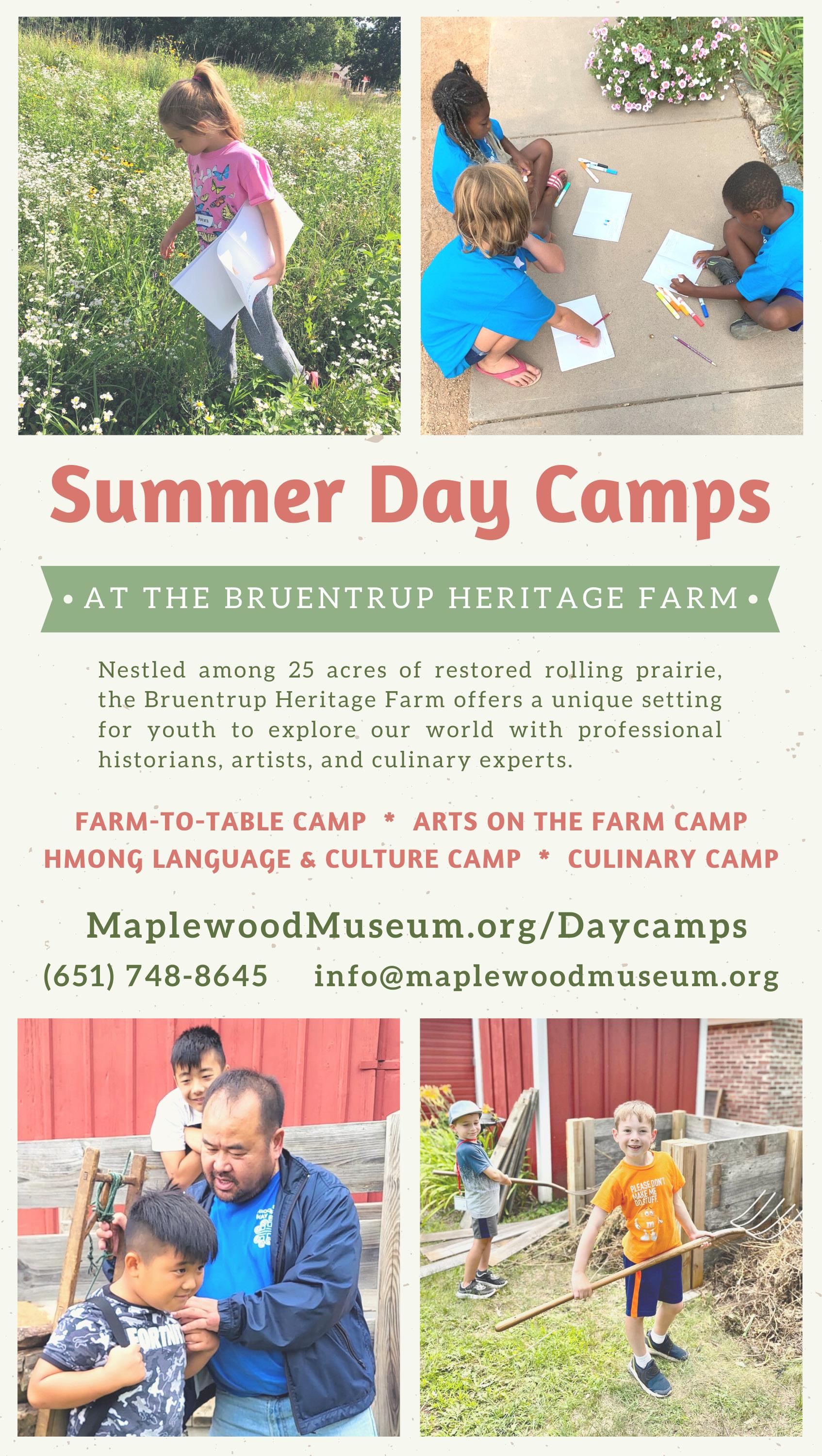

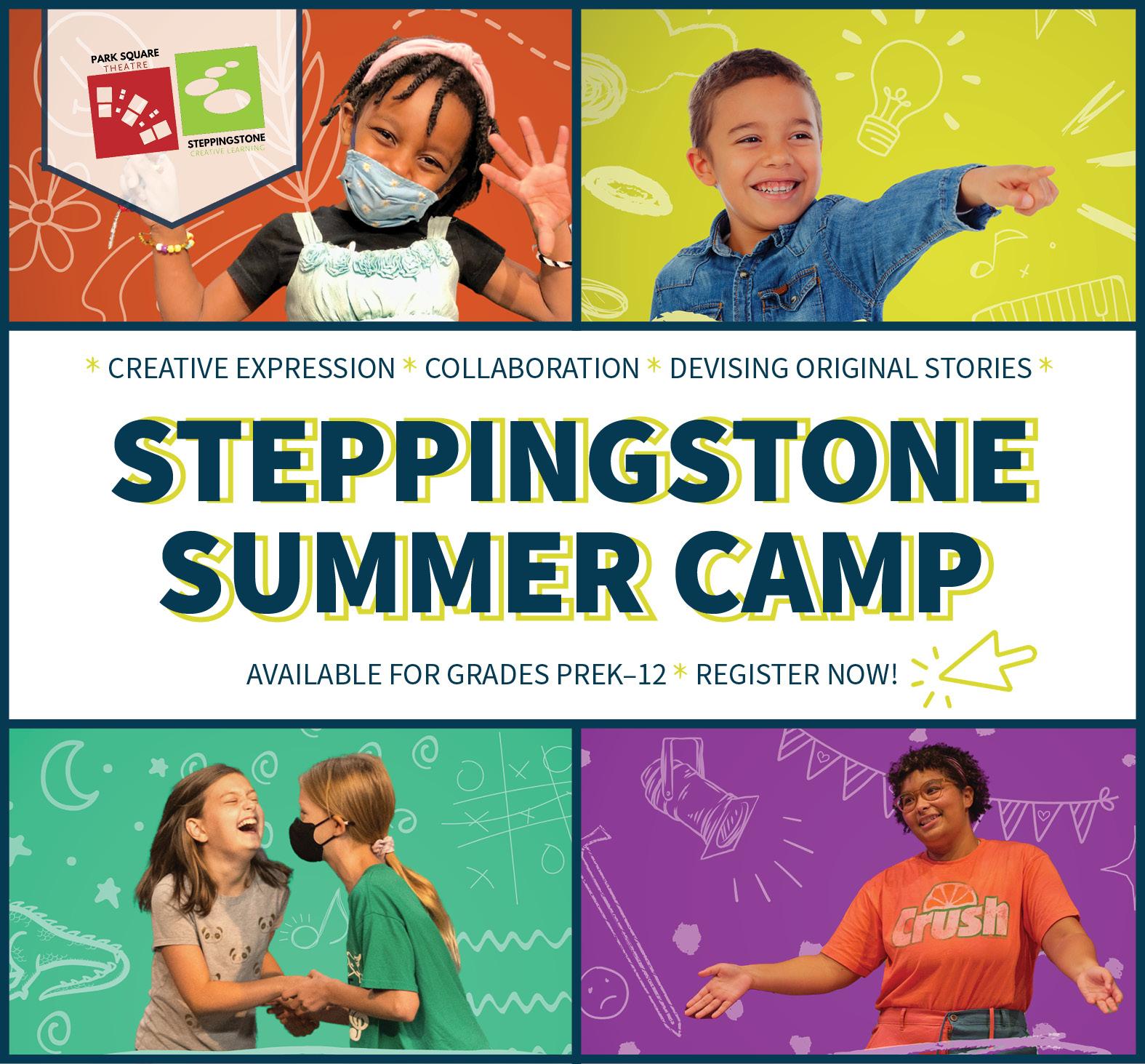
School’s almost out. You found the perfect day camp for your little artist, swimmer or scientist, but you’re worried because camp is unfamiliar territory. Help prepare your child for what’s ahead with these tips to make his first camp experience a positive one.

• Children should memorize their full name, address and a parent’s cell phone number before camp begins.
• Many day camps require closed-toe shoes and many activities need kids to get shoes on and off quickly, Practice tying shoelaces; if your little one hasn’t mastered this skill before camp starts, consider a pair of Velcro shoes. Even then, do trial runs until he masters getting shoes on and off in a timely manner. Practice makes perfect!
• Children should be able to zip their own jackets and pants (or wear ones that pull on). Teach them to tie a jacket around their waist, if necessary.
• For half-day camp, apply sunscreen before leaving; children who attend full day camp should know how and when to reapply.
• Packaging often poses a problem for little fingers. Practice opening wrappers and containers at home. Don’t assume camp staff will have time to assist everyone at lunchtime.
• One in 13 children has a food allergy; it’s likely that someone at camp will, too. Swapping snacks sounds like fun, but it’s not safe for many kids. Cross-contamination can pose a big problem for kids allergic to nuts or gluten. Teach children not to share food and to respect other people’s space by not touching their lunchbox and food.
• Stop yourself the next time you start to clean up after your kids. Teach children how to sort trash from recyclables, throw items in proper bins, and most importantly, not to expect adults to clean up after them. Part of being a successful, happy camper is to help out and do his part.

For many first-time campers, enrolling with a buddy helps ease jitters. But it’s important to gain the confidence and skills to make new friends. Review and role-play skills that show openness to making friends:
• Practice how to greet someone new. Make eye contact and smile.
• When someone says “hi”, teach your child to reply, even if he feels shy. Not responding may be misconstrued that he doesn’t want to be friends.
• Remind children to take turns.
• Discuss the idea that not everyone has to be friends-especially if your child is a people pleaser.
• Children should know how (and be willing) to ask for help when needed. If he has a special need, let camp know ahead of time. Kids and staff can even agree on a signal to get a staff member’s attention.
• Have kids practice asking for what they want (politely). Manners go a long way. You’ve taught your child “please” and “thank you” since he was knee high-be sure he says these all-important phrases without your cue.
• Practice simple, direct responses to communicate dissatisfaction when necessary, such as “I don’t like that. Don’t do it again.” If an annoying behavior continues from another child, ask a camp counselor for help.

Camp is a place to try new things. Let your child know he’s expected to participate in all activities, and that it’s OK if he doesn’t do everything just right. A child who pouts until he gets his way or is unwilling to try new things may not be ready for camp. Kids who follow directions and are willing to venture into “new territory” have an opportunity to learn many skills that build confidence and independence.
Cherie Gough is a writer and mom of two who enjoys the enrichment camp brings to her kids’ summer. Find her on IG @cgoughwrites.
Over 25 Camps for Ages 3-18
Register at MacPhail.org

Summer camp is a wonderful experience for young girls, and WeHaKee Camp for Girls offers one of the best experiences in the Midwest. Girls between the ages of 7 and 17 will have the time of their lives at WeHaKee, discovering new things about themselves, making new friends, and having the best summer ever. WeHaKee Camp for Girls is a place where girls can build new relationships and find their true selves.
The moment your camper arrives at WeHaKee, they will feel at home. The camp staff is dedicated to making sure that each girl feels comfortable, welcome, and confident. WeHaKee is a diverse community, with girls from all over the United States and the world, and camp staff is there to help each girl develop as an individual person, reach her full potential, and build lasting friendships.
WeHaKee Camp for Girls is a community that is built on traditions, values, and fun. Established in 1923, WeHaKee has a long history of providing girls with the best summer camp experience possible. Whether they’re horseback riding, water skiing, dancing, or roasting marshmallows, WeHaKee is all about building great relationships and making memories that will last a lifetime.

At WeHaKee Camp for Girls, your child will…
• Be safe. Our staff is selected based on their exceptional skill sets, their strong understanding of children and youth development, and their sincere compassion for others. From there, they are carefully screened (including employment and criminal background checks) and extensively trained to ensure that they keep the safety, security and development of all the campers a top priority. To ensure this, WeHaKee Camp for Girls is fully accredited by the American Camp Association. A nurse is in residence throughout the summer. Nearly all the staff at WeHaKee Camp for Girls are certified in first aid and CPR. All aquatic activities are supervised and monitored by certified lifeguards ensuring safe waterfront and pool experiences for our campers.

• Learn new activities and skills that will enhance their confidence, independence, and motivation not only at camp, but that will remain when they return home from their WeHaKee Camp for Girls experience.

• Make friends from around the world that will last a lifetime.
• Experience a positive, caring community where they can confidently experience who they are and embrace who they can become.

• Have fun each and every day. They will have the time of their life!

The mission of WeHaKee Camp for Girls is to provide a welcoming community where girls can strengthen their mind, body, and spirit through fun, play, and nature. WeHaKee inspires relationships based on the values of kindness, truth, justice, and peace. The camp staff helps each girl understand her own uniqueness and individuality, and encourages her to reach her full potential. Living in a diverse community with girls from a variety of cultures, races, regions, and socio-economic backgrounds allows each girl to grow and develop in an atmosphere of acceptance, encouragement, and social growth.
Summer 2023
Camps for Grades K-12

Extraordinary summer experiences for all age levels and interests.
Weekly camps
Jun. 5-Sept. 1
Scholarships available

“As the directors of Camp WeHaKee for nearly 20 years, we offer over 50 years of combined experience as youth development specialists. And having raised two amazing daughters, we also bring a wealth of practical experience and wisdom in knowing how to help girls and young women grow in confidence, independence, resilience and leadership.
Additionally, our decades of experience not only allows us to attract and hire exceptional counselors and staff, but prepares them to be kind, supportive, fun and safe mentors and role models for our campers.
Our depth of experience also helps us continually improve our program offerings to meet the needs and interests of today’s children and youth. And we know how best to create a safe, nurturing, and fun community to help girls grow in ways they and you have never imagined!
Our consistent goal is to provide every camper a reassuring sense of belonging the moment they arrive so that each individual feels comfortable and empowered to try new things, meet new people and have the time of their life! We believe that camp is a place for challenge and growth all wrapped up in remarkable fun!
WeHaKee Camp for Girls offers 2, 4, and 6-week sessions, so you can choose the session that is right for you and your family. Whether they attend for 2 weeks or 6, they are sure to have an unforgettable experience at Camp WeHaKee.

WeHaKee Camp for Girls is a place where girls can discover themselves, make new friends, and have the time of their lives. With traditions, values, and fun, WeHaKee is the summer camp experience they’ve always dreamed of. So, come join us this summer, and find out just how much fun discovering oneself at camp can be!



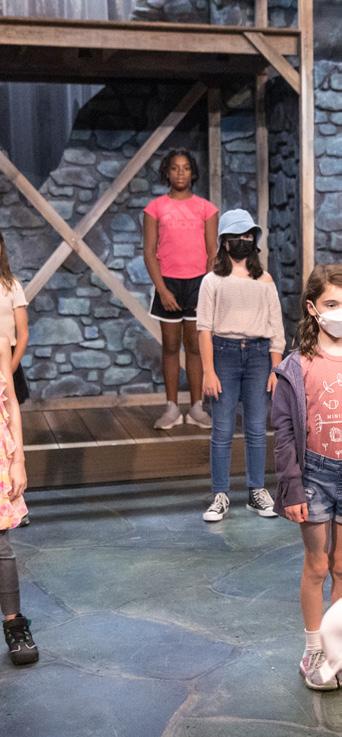

Encourage your kid to pack his own suitcase. (Then get ready to pack away your anxiety!)
“Mom. You forgot to pack extra socks,” my 10-year-old son said accusingly after we picked him up from a weeklong overnight camp.
Socks, I mused, mentally searching through the gear I’d packed over a week ago.
I remembered making an extra trip to the store for the hiking socks requested on the camp list. Had I not packed them?
“Do you mean hiking socks?” I asked.
“No, just any socks. I have a blister because I wore the same pair of socks all week,” he said, his voice rising.
“I packed more than enough socks,” I assured him. “They were right there with your underwear.”
“Oh yeah: I could not find my underwear, so I wore the same pair of underwear all week, too.”
At this point, his dad and I burst out laughing, but he didn’t see the humor.

“They were not in the bag! I even had a counselor help me look for them,” he asserted confidently.
Puzzled, I wonder if he could’ve been the victim of a cabin prank in which someone hid his underwear and socks.
When we arrived home, I opened the large gear bag. Lo and behold, jammed in one section, just where I’d packed them, were ample clean socks and underwear.
“Oh, I guess we never saw the second zippered section,” my son said.
My mind jumped back to the night before camp when I finished packing his bag and then, as suggested by the camp guide, walked him through where everything was.
I suppose his, “Yeah, yeah, Mom, I know,” should’ve shown me he wasn’t listening.

Lesson learned. The following year, he packed his own bag and I reviewed it.
As you pack and prepare to send your child off to camp, whether it’s for the first or fifth time, remember that camp organizers are experts. Just trust their directions — and follow them closely.

Here are some general guidelines I’ve learned (and relearned) after sending two children to various camps for many years.
Start early: Review the suggested packing list with your child a few weeks before camp. This will give you time to purchase any missing items. (It might also help your child get excited about camp.)

Let them do it: Have your children pack their own bags (with supervision). This will help them eventually find those important socks and underwear. Plus, it adds to their sense of independence, another reason we choose to send them to camp, right?

Label it: From luggage to individual items, use a system to label every item that leaves your house. Preprinted labels are great, but can be expensive. One year when my daughter attended camp, we created a logo for her using her initials. We marked all her belongings using a permanent marker. Even if another camper had the same initials, her items were uniquely identified.
Be careful with care packages: Double check if these are even allowed at camp. In more rustic surroundings, food isn’t permitted in sleeping quarters because it attracts wild animals. If food is allowed, send enough for your child’s cabin mates, too. But be sensitive to any allergy issues. Many camps are peanut-free or nut-free.
Pack it out: A horse camp my daughter attended suggested campers bring a detailed list of their belongings. When she was packing up to go home, it made it easier for her to locate missing items. For example: She knew she was looking for two pink shirts, not one.
Don’t helicopter: Keep communication to a minimum and obey any camp restrictions. Many camps allow one-way communication in which parents can send a daily letter or email to the child. You’re the expert on your children: Will receiving a daily note from you make them more or less lonely? Our son asked us not to send any notes the second year as he found the notes made him lonely and homesick.
Be strong: I know you may be anxious and missing your child, but don’t call the camp unless it’s an emergency. Pack your own anxiety away and prepare your children for the possibility of homesickness. Tell them it’s normal and can happen to campers of any age. Assure them you know they can handle it. Counselors should be trained to help campers work through these issues. If your child calls crying for you to come and get him, steel yourself and repeat that you’re confident in his ability to manage.
Then speak to the head counselor to assess the situation. This happened to us the first year our son attended camp. But he worked through it (so did Mom and Dad) and he felt quite proud and independent when he completed his first week at camp.
Don’t bring valuables: Jewelry and expensive electronics belong at home. If children attend camp with cell phones or iPads, they might miss opportunities to connect and make new friends. And isn’t that why we’re sending them to camp in the first place?

Summer camps are exciting and immersive weeklong classes for kids ages 5-15 Choose from morning or afternoon camps, or combine the two to create a full day of camp!
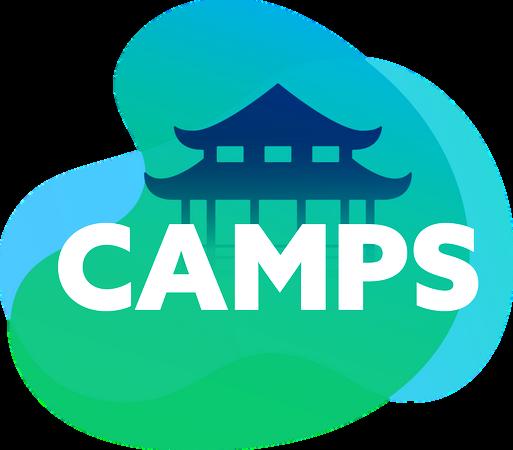
This summer's camps for kids ages 5-7 include JR Adventures in Game Design, JR Inventors with Makey Makey, JR Makers with Microcontrollers, and JR STEM Discoveries, which are all hands-on and group-based explorations into the world of technology and STEM.
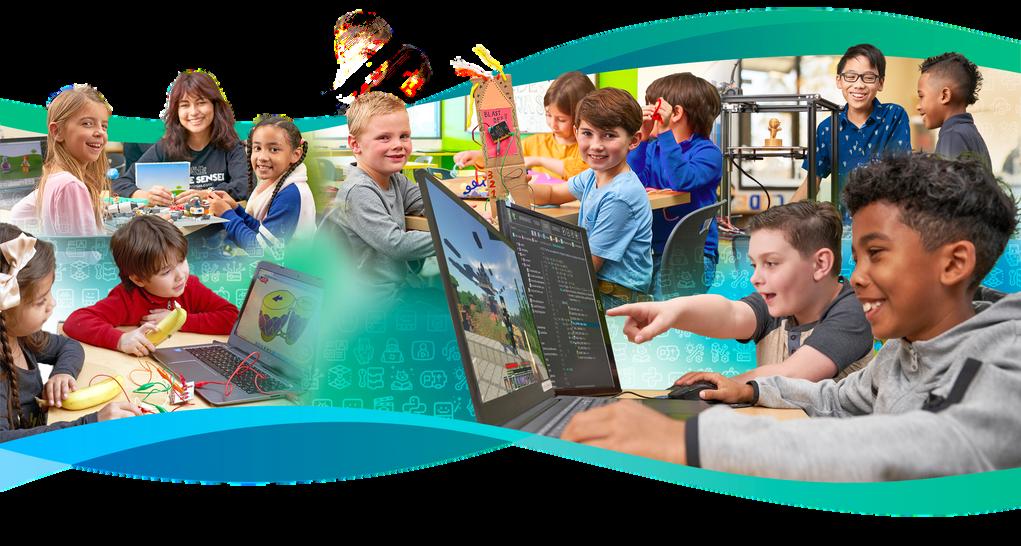
For ages 8-15, we are offering 3D Design and Print, Adventures in Game Design, Become a YouTuber, Code Your Own Arcade, Code Your Own Robot in Minecraft®, Composing with Code, Intro to Roblox Development, Inventors with Makey Makey, Modding with Minecraft®, Moviemaking with Minecraft®, and Robotics with LEGO® Make sure to sign up early, because seats do fill up quickly!



Code Ninjas Kids' STEM Coding Centers teaches kids ages 5-15 how to code through a game-based curriculum. Our flexible, year-round program is offered after school daily and on weekends where kids can be dropped off for 1 or 2 hour sessions Here in a FUN and safe environment, they'll learn to code and play their very own video games with the help of our amazing Code Senseis® Turn screen time into something productive and watch your child's confidence soar as they complete the quest for Black Belt! Kids have fun, parents see results ®
Additionally, we offer day camps during Spring and Winter breaks and non-school days, Parents' Night Out events on Friday and Saturday nights, exciting Clubs like Dungeons & Dragons, Minecraft, & Roblox, awesome STEM-themed Birthday Parties, Boy Scout and Girl Scout events, school fundraisers, and much more!
Plan ahead: Think about how long you’ll be living out of a backpack, duffel bag, suitcase, or trunk
Follow the rules: Review the packing list provided by your camp
Label everything: Use laundry pens, as well as iron-on or sew-in labels
Avoid sore feet: Break in shoes and boots before camp begins
• Boots
• Tennis shoes
• Sandals/flip-flops
• Dress shoes (check with camp)
• Socks
CLOTHING
• T-shirts/tank tops
• Shorts
• Long pants
• Jeans
• Jacket
• Raincoat
• Sweater
• Sweatshirt/sweatpants
• Swimsuit
• Dress clothes (check with camp)
• Pajamas and robe
• Underwear
• Bed and Bath
• Towels
• Sheet
• Pillow
• Sleeping bag
• Laundry bag
• Baseball cap
• Sunhat
• Scarf
• Bandanna
• Eyeglasses or contact lenses
• Sunglasses
• Swimming Goggles
GEAR
• Books and magazines
• Flashlight and batteries
• Frisbee
• Water bottle
• Writing paper/journal

• Check with camp on policies for electronics, musical instruments, sports equipment, and special gear.
List courtesy of the American Camp Association, ACACamps.org

• Brush & Comb
• Shampoo
• Bar soap (in a case)
• Toothbrush (in a case)
• Toothpaste

• Deodorant
• Insect Repellent
• Sunscreen
• Lip balm
• Shaving gear
• Feminine products

Kids have a lot of competing for their attention, and summer camps know that, to stand out. They have to adapt to the changing interests of children. According to a survey by the American Camp Association, 75 percent of camp directors reported adding new activities and programs over the last few years. Adventurous activities like ropes courses, climbing walls, zip lines, cave exploring, and backpacking topped the list of adaptations, while the demand for performing and fine arts like dance, ceramics, photography, podcasting and theater is also on the rise.






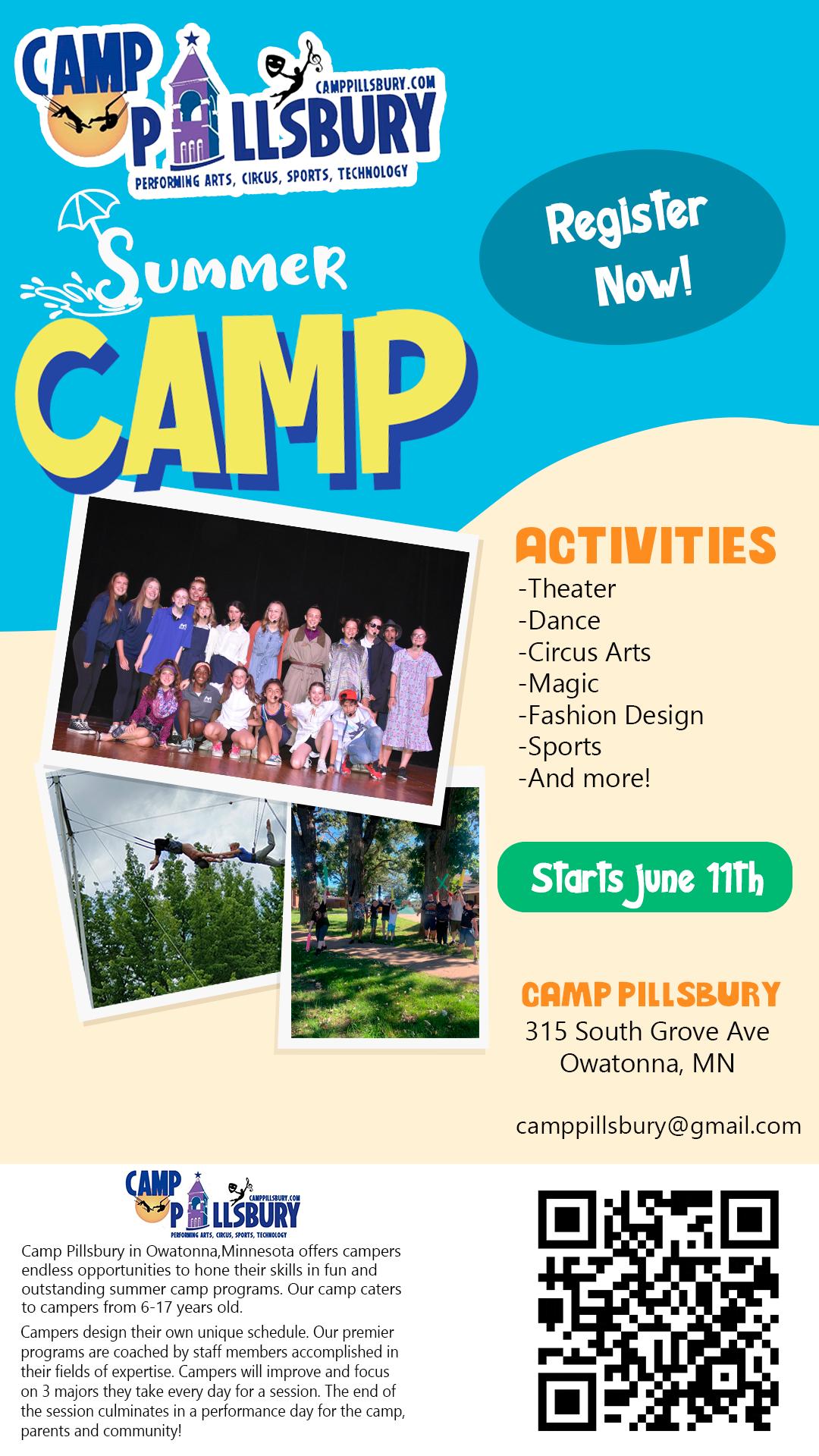

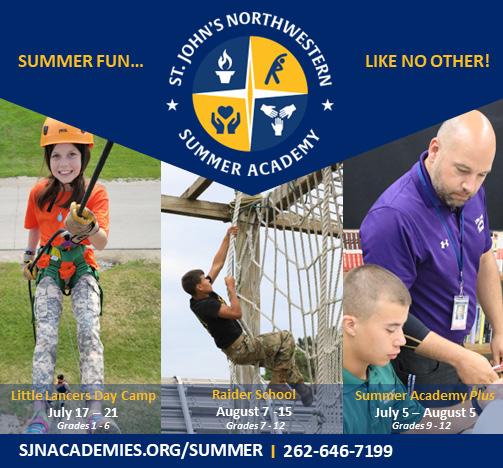
 BY SARAH JACKSON
BY SARAH JACKSON
Helping your child get more connected to the natural world doesn’t have to mean yet another trip to the local park or grand excursions to go hiking, biking or camping.
It can also be garden time! No garden? No problem!
The Children’s Garden at the Minnesota Landscape Arboretum Marion Andrus Learning Center in Chaska is designed for kids — with oodles of scientific and creative potential waiting to be discovered amongst the herbs, vegetables and flowers.

This summer, Green Bean Family Garden Time at the Arboretum will allow ages 5-11 — accompanied by an adult — to learn about gardening and outdoor topics on select Saturdays.
“Though most of the Arboretum’s day camps for kids sell out quickly in January, there’s still room for adults and kids to get in on this dynamic program where families choose one session or multiple sessions. Each week includes a theme:
• June 3 | Seed Party
• June 17 | Leaves Make Food
• July 8 | Dirt Detectives and Insect Investigators

• July 22 | Pollinators & Friends
• Aug. 5 | Garden Art
• Aug. 19 | Flower Extravaganza
• Sept. 9 | All About Veggies
• Sept. 23 | Fall Garden Harvest
Green Bean Family Garden Time at the Minnesota Landscape Arboretum in Chaska features a different theme on select Saturdays June 3 through Sept. 23. Photo by Jason BoudreauLandis
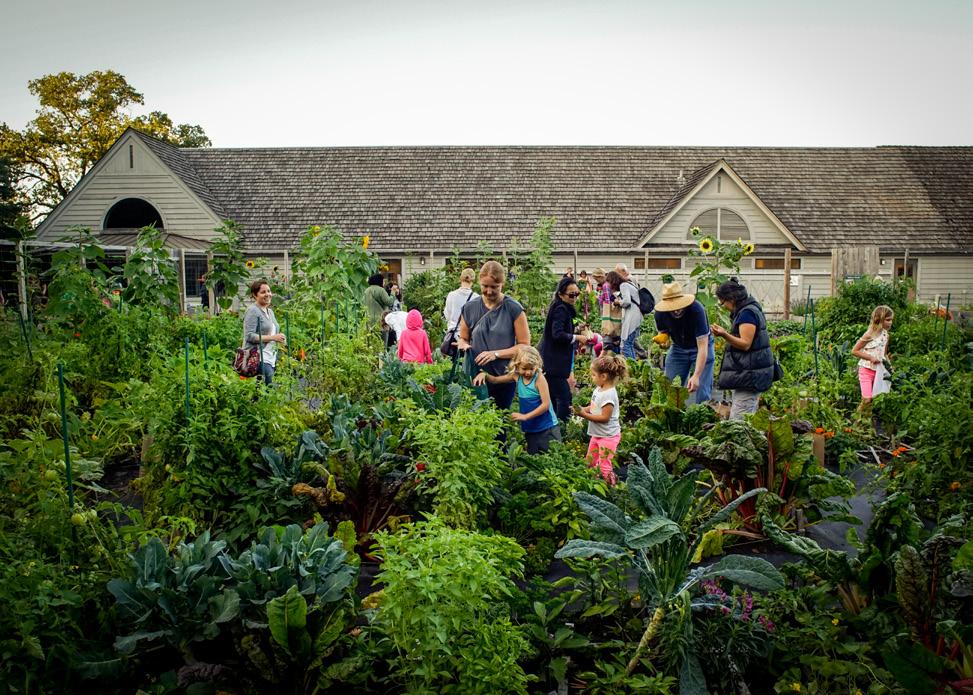
John Wanner, left, with his brother Bill, play at the Arboretum during children’s garden programming many years ago. Today, John Wanner is a home gardener and his daughters (pictured below) love the programming at the Arb, now known as Green Bean Family Garden Time. Photo courtesy of John Wanner.
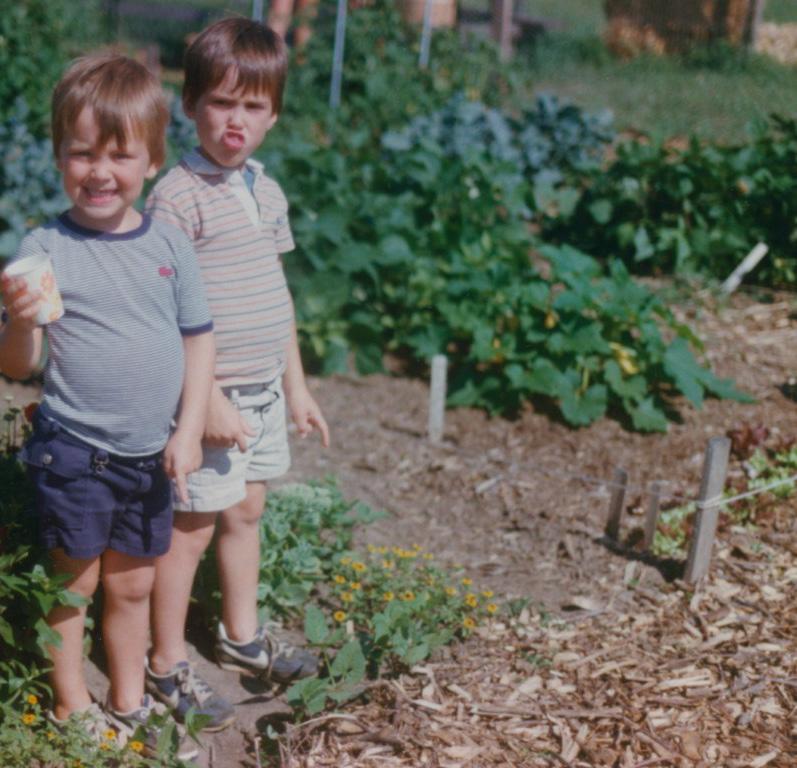
Timing is flexible, so you can participate as your schedule allows at themed, staffed stations during a two-hour period, 9:30-11:30 a.m., for a do-at-your-own-pace experience.
Malia Brandt, Arboretum Youth Education Program Manager, said Green Bean Family Garden Time isn’t overly structured.
“This is a way for families to slow down, explore, connect and learn together in the gardens,” Brandt said. “It’s a creative way to get the kids out of the house and into nature on the weekend.”
As a boy, more than 20 years ago, Twin Cities resident John Wanner was one of the first participants in the original Children’s Garden program at the Arboretum. Today the father fondly recalls memories of spending time frolicking in the gardens with his brother, Bill.
In passing the tradition onto the next generation, John Wanner’s daughters have regularly attended Green Bean Family Garden Time at the Arb.

To this day, John Wanner is an enthusiastic home gardener and joyfully appreciates the connections the program gave him to the natural world.
“I give a lot of credit to the Arboretum for inspiring me,” he said.

Arboretum Educator Melinda Hooker said the Wanner family isn’t the only one that’s been enriched by the Arboretum’s Youth Education programming over the years.
“I was in the garden the other afternoon and some older teen girls ran into the Under the Oak play area and I heard one say, ‘This place is literally my childhood!’
“I get goosebumps just thinking about that,” Hooker said. “It is such a wonderful connection, — and it shows what
amazing and long-standing resources Arboretum Youth Education and the Children’s Garden are for the community.”
Pricing for Green Bean Family Garden Time is $10 per child per session and includes all supplies and child admission to the Arboretum. Daily general admission tickets ($15 for ages 16 and up) are required for all accompanying family members who are not Arboretum members. Non-participating kids are free to tag along.
Brandt said there’s another perk of the programming at the learning gardens.

“It’s the only place at the Arboretum where you’re encouraged to actually dig into our gardens. Arboretum staff help your family spend quality time together with facilitated activities,” she said. “And kids get to make fun take-home projects to remember their visit to the Arboretum.”
Harvest time is a favorite for participants registered for Green Bean Family Garden Time at the Minnesota Landscape Arboretum in Chaska. Photo by Jason Boudreau-Landis
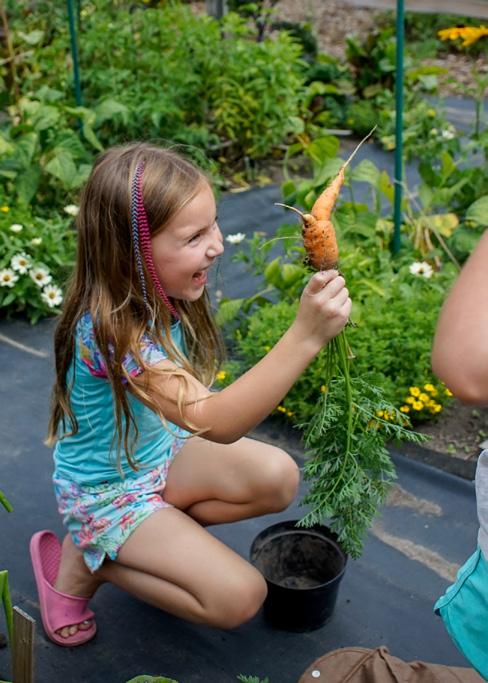
After programming concludes, families are welcome to explore the Learning Center’s Green Play Yard, a 15,000-square-foot area made from natural materials separated into three age zones:
• The Preschool Area, for ages 3-5, includes a track for wheeled play, a stage and seating area, a larger playhouse with a play table and shelves, a fort-start area and more.
• The Infant Area, for ages 0-16 months, includes a crawl-along garden, a swing, pull-up stumps, a peek-a-boo wall and a bridge with tickling grasses.
• The Toddler Area, for ages 16-33 months, includes a rolling hill, a track for wheeled play, a vine tunnel, a wooded path, a hopping stump, a sand-play area, a playhouse, tea party corner and more.
And of course there’s the option to visit the entire 1,200-acre Arboretum, which includes a Three-Mile Drive, Three-Mile Walk, a Maze Garden, the Farm at the Arb, the Tashjian Bee & Pollinator Discovery Center and — in the Oswald Visitor Center — the Eatery at the Arboretum, the Gift & Garden Store, a conservatory and art galleries.
Sarah Jackson is a mother, a lifelong gardener and works as a media specialist at the Minnesota Landscape Arboretum in Chaska.
What: Dig into nature as a family as you spend time together in the Learning Center’s backyard gardens and play yards this summer with ages 5-11 with at least one adult attending. All instruction and materials are provided and each week covers a different theme. Staffed activity stations are available for do-atyour-own-pace fun.
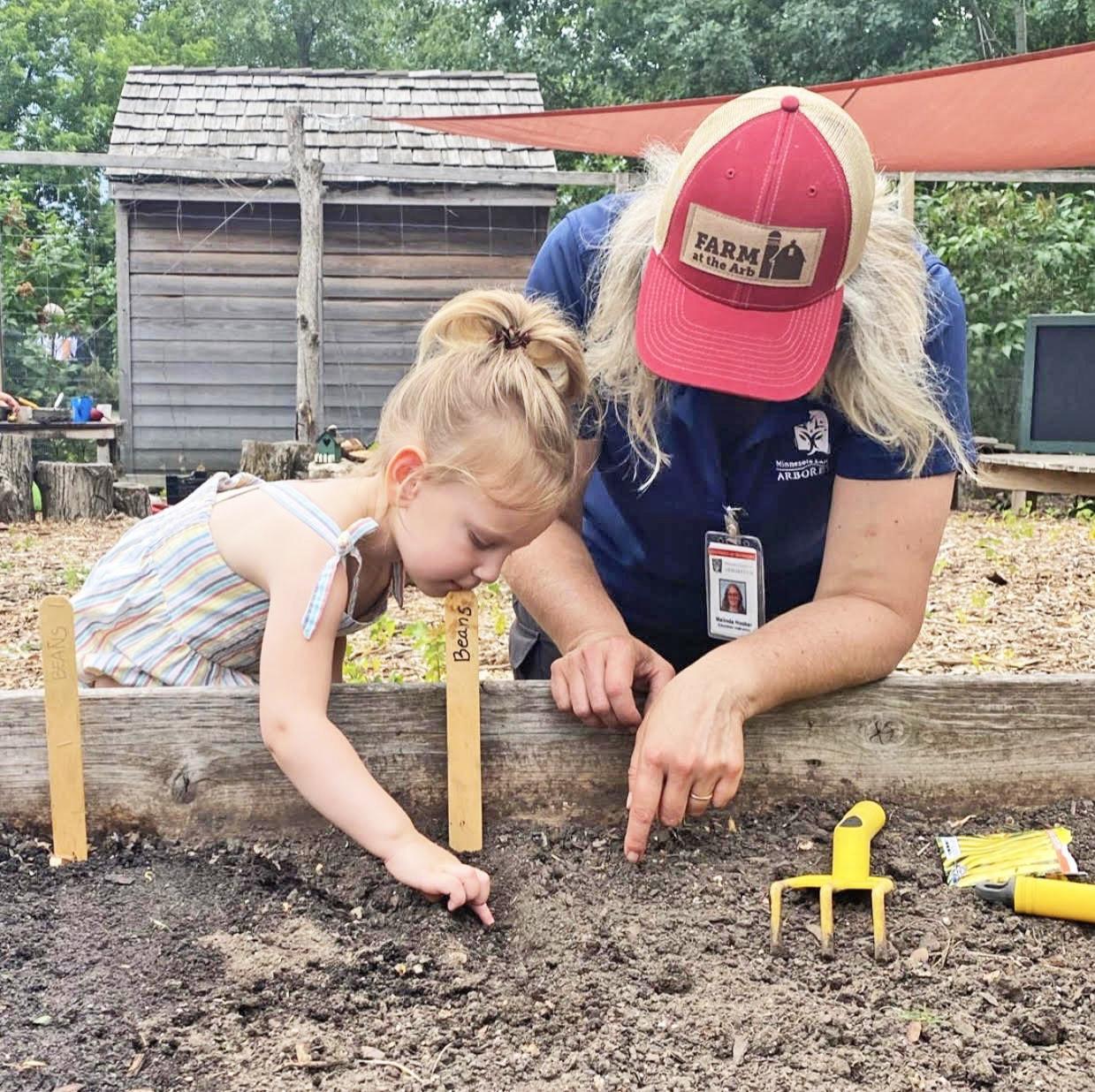
When: 9:30-11:30 a.m. select Saturdays June 3 through Sept. 23 without a formal start time for family flexibility.
• The Marion Andrus Learning Center at the Minnesota Landscape Arboretum, 3675 Arboretum Dr, Chaska, MN 55318

• Advance registration is required.
• Ages 5-11, but non-participating children are welcome.
Cost: $10 per child per session and includes all supplies and child admission to the Arboretum. Daily general admission tickets ($15 for ages 16 and up) are required for all accompanying family members who are not Arboretum members. Non-participating kids are free to tag along. Info and registration: arb.umn.edu/learn/green-bean-family




Our 14 week comprehensive developmental Summer Tennis & Fun Camp - is an "outdoor athletic minded immersion camp experience program"
Camp Dates: June 5 - September 1, 2023
Half & Full Day Options
Our Camp is designed for all ages, and levels, where players can return week after week and year after year to reach whatever level of play they can while having a great summer outdoor athletic experience on and off the tennis courts.
Nearly everyone gets homesick. That’s the news from the American Academy of Pediatrics, which reports in a recent study that about 96 percent of young people miss something about home the first time they are away. Smaller percentage (one in 10) suffer from intense homesickness. The bottom line: homesickness really can be a sickness.
The study aims to help parents, caregivers, and physicians recognize and prevent or lessen homesickness, whether at camp, college, or during some other separation. The study tells us some things we know intuitively – Children with homesickness usually present as being tearful and withdrawn–and some things that contradict our intuition. For example, checking on how campers are doing by asking “How homesick have you been feeling” probably won’t make them more homesick. And severe homesickness, unlike mild homesickness, won’t go away on its own.
To prevent homesickness, the study recommends among other things:
• Involve kids in deciding whether or not to go to camp.
• Tell kids that homesickness is normal.
• Help kids plan specific coping strategies (such as writing a letter or talking to friends).

• Have kids spend a weekend with a relative or friend, as a dry run. • Practice letter writing with campers.
• Help kids learn as much as possible about the camp.
• Introduce kids to at least one person from the camp.
• Encourage kids to make friends and get support from trusted adults.
• Try not to let your camper sense your own anxiousness.

• Show your camper on a calendar how many days until camp starts and how long it will last.
With over 15 million children heading to residential camp this summer, planning ahead means fewer teary phone calls and pleas to come home.

